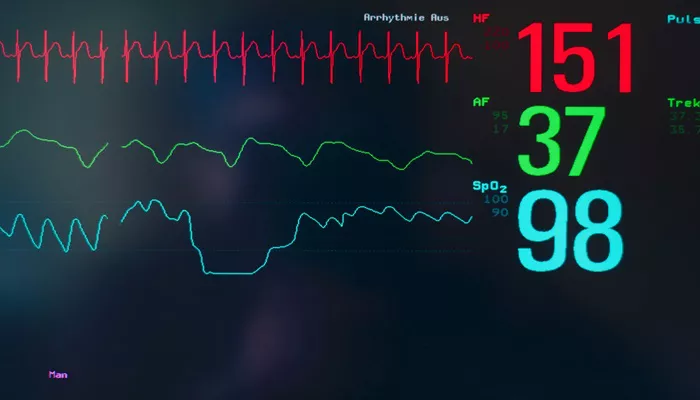Supraventricular tachycardia (SVT) is a condition characterized by an abnormally fast heart rate originating above the heart’s ventricles. It can cause symptoms such as palpitations, dizziness, and shortness of breath. For many individuals diagnosed with SVT, a common concern is whether they can safely engage in physical exercise. This article aims to explore the relationship between SVT and exercise, providing insights into how patients can manage their condition while maintaining an active lifestyle.
What Is Supraventricular Tachycardia?
SVT encompasses various arrhythmias that originate in the atria or the atrioventricular (AV) node. The most common types include:
Atrioventricular Nodal Reentrant Tachycardia (AVNRT): A reentrant circuit involving the AV node.
Atrioventricular Reentrant Tachycardia (AVRT): Often associated with an accessory pathway, such as in Wolff-Parkinson-White syndrome.
Atrial Tachycardia: A rapid heartbeat that arises from ectopic foci in the atria.
The prevalence of SVT is approximately 2.25 per 1,000 people, with a higher incidence in women than men. While SVT is generally not life-threatening, it can significantly impact a person’s quality of life due to its symptoms and potential for recurrence.
Exercise And Its Effects on SVT
Engaging in regular physical activity is crucial for overall health and can provide numerous cardiovascular benefits.
However, for individuals with SVT, exercise may trigger episodes of tachycardia. The relationship between exercise and SVT is complex and varies from person to person.
SEE ALSO: Can Deconditioning Cause Tachycardia?
1. Potential Benefits of Exercise
Improved Cardiovascular Health: Regular exercise strengthens the heart muscle, improves circulation, and can help regulate heart rhythms.
Stress Reduction: Physical activity is known to reduce stress levels, which can be a trigger for SVT episodes.
Weight Management: Maintaining a healthy weight through exercise can alleviate additional strain on the heart.
Enhanced Quality of Life: Staying active can improve mood and overall well-being, which is particularly important for those managing chronic conditions like SVT.
2. Risks Associated with Exercise
Triggering Episodes: High-intensity workouts may provoke episodes of SVT in some individuals. Symptoms during these episodes may include palpitations, dizziness, or even fainting.
Increased Heart Rate: During exercise, the heart rate naturally increases due to heightened sympathetic nervous system activity. For someone with SVT, this could lead to a rapid heart rate that exacerbates their condition.
Dehydration and Electrolyte Imbalance: Intense physical activity without proper hydration can lead to electrolyte disturbances that may trigger arrhythmias.
Guidelines for Exercising with SVT
If you have been diagnosed with SVT and wish to continue exercising, consider the following guidelines:
1. Consult Your Healthcare Provider
Before starting or modifying your exercise routine:
Get a thorough evaluation: Discuss your specific type of SVT with your cardiologist.
Consider a stress test: This test assesses how your heart responds to exercise and helps determine safe levels of intensity.
2. Start Slowly and Progress Gradually
Begin with low-intensity activities: Walking, cycling at a leisurely pace, or swimming are excellent starting points.
Monitor your heart rate: Learn how to check your pulse during exercise.
Your healthcare provider may recommend target heart rate zones that are safe for you.
Increase intensity gradually: As you become more comfortable with your routine, slowly increase the intensity while paying attention to how your body responds.
3. Stay Hydrated and Maintain Electrolyte Balance
Drink plenty of fluids: Hydration is essential during exercise to prevent dehydration-related triggers.
Include electrolyte-rich foods: Foods high in potassium and magnesium (e.g., bananas, spinach) can help maintain heart rhythm stability.
Recognize Your Triggers
Keep a symptom diary: Document when you experience SVT episodes relative to your activities. This information can help identify specific triggers related to exercise or other lifestyle factors.
Avoid known triggers before exercising: If certain foods or activities provoke your symptoms, try to avoid them before workouts.
Choose Activities Wisely
Some exercises may be more suitable than others:
Low-impact exercises like yoga or tai chi can be beneficial for flexibility and stress reduction without excessively raising heart rates.
Avoid high-intensity interval training (HIIT) or heavy weightlifting if these activities have previously triggered episodes of SVT.
Long-term Management of SVT
Managing SVT often requires a combination of lifestyle changes, medication, and possibly medical procedures:
Medications: Beta-blockers or calcium channel blockers are commonly prescribed to help control heart rate.
Catheter Ablation: For patients with frequent or severe symptoms, catheter ablation may be recommended as a curative treatment option. This procedure involves destroying the small area of heart tissue causing the abnormal electrical signals.
Regular Follow-ups: Maintain regular appointments with your healthcare provider to monitor your condition and adjust treatment as necessary.
Conclusion
Exercising with supraventricular tachycardia is possible but requires careful management and individualization of activity levels based on personal tolerance and medical advice. Regular physical activity offers significant benefits that can enhance overall cardiovascular health; however, it is crucial for individuals with SVT to approach exercise mindfully. By consulting healthcare professionals, monitoring symptoms closely, and making informed choices about physical activities, patients can maintain an active lifestyle while managing their condition effectively.

